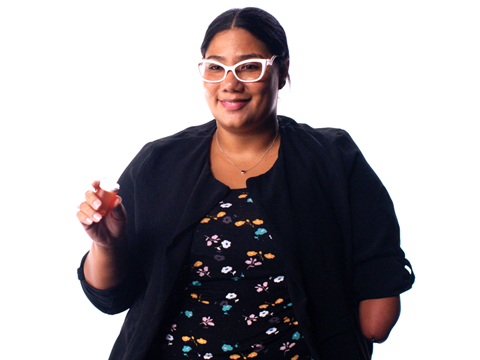
In a move that is expected to benefit adult consumers with physical disabilities, SnapSlide has introduced a line of no-torque caps that can be opened and closed with one hand, making them less straining for children’s hands.
The company says it developed its product line to target the 60 million U.S. consumers who suffer from manual dexterity issues, including arthritis, fibromyalgia, multiple sclerosis and Parkinson’s disease. That figure includes 12 million people who have temporarily or permanently lost the use of one arm or hand, including amputees, stroke or paralysis victims and people born with congenital disabilities.
In all these cases, traditionally sealed containers can be difficult to open – especially in the pharmaceutical industry, where security and child-proofing measures often prevent access to the pack.
That’s why the patented cap closure technology features slide-to-open and slide-to-close functionality that is said to require less force and dexterity to operate compared to traditional push-and-turn solutions.
When opened, the cap itself remains secured to the vial, which is believed to improve safety, convenience and ease of administering a measured amount of medication. The cap system produces an auditory cue, a 57-decibel “snap” sound, to let consumers know the medicine bottle is securely closed.
But the company suggests SnapSlide will also be popular with consumers who don’t have dexterity issues: According to the company’s focus groups, almost 90% of consumers prefer SnapSlide to traditional amber vial caps, and two-thirds claimed they would give preferential treatment to brands that use SnapSlide, whether they were staying loyal to a compliant brand or switching from a competitor that hadn’t adopted the new cap.
Another notable feature is the closure’s low profile, which is believed to halve the storage space required by traditional child-lock closures, improving storage and shipping efficiency.
Additionally, the company claims the cap is 27% lighter than traditional child-resistant caps. SnapSlide says it believes the cap will reduce overall plastic usage, while being priced in line with other cap closures on the market, and without requiring significant adjustments to downstream production processes.
Apparently, the solution is suitable for oral solid over-the-counter (OTC) applications and can be adapted to a variety of commonly used containers, including child-resistant plastic and glass bottles.
A consumer awareness campaign is planned for later this year to promote SnapSlide to the general public and non-profit organizations in the disability sector.
“SnapSlide prescription vial caps have the potential to make life better for everyone and change many lives,” said Rocky Batzel, inventor and CEO of SnapSlide, LLC. “For consumers with disabilities, the caps provide convenience, accessibility, safety and independence. For retail chains, the caps have the potential to transform child-resistant packaging from an undifferentiated product into a competitive advantage.”
On World Braille Day in January, Origin’s Marketing Lead, Steven Brownett-Gale, discussed the importance of accessibility in pharmaceutical packaging design. From tactile features to implementing smart packaging, he outlined the industry’s current efforts to optimise design for visually impaired consumers.
In another product redesigned for consumers with disabilities, PlayStation’s customizable PS5 controller kits will now come in packaging designed to be opened one-handed. Developed in collaboration with accessibility experts, the packs feature a loop that allows the product to slide out of the packaging by pulling from either the left or right side.
In other news, Aptar Closures recently introduced an e-commerce compatible, locking, disk-top closure for beauty, personal care and home care applications that is said to be fully recyclable when paired with PE or PET bottles.
If you liked this story, you might also like:
Summary: How feasible is biorecycling of plastics?
Report: How top brands are advancing packaging sustainability
Summary: Using ocean plastics in packaging – how, why and should we use them?
Sustainable Packaging Summit: Is the world on track to tackle plastic pollution? Looking back at five years of the global commitment

